Over the years, Suttons has tested and developed new and improved grafting techniques to bring you vigorous and hardy plants capable of huge yields. Our most recent F1 ‘Scorpio’ grafted aubergine is so successful that it starts producing glossy black aubergines up to two months earlier than non-grafted varieties. What’s more, it continues to crop for much longer than regular plants. If you don’t have a heated propagator or greenhouse in which to sow seeds, grafted aubergine plants are an excellent option.
Fancy trying this turbo-charged shortcut? Take a look at our wide range of grafted plants where you’ll find aubergines, tomatoes, cucumbers, peppers and more.
How are plants grafted?
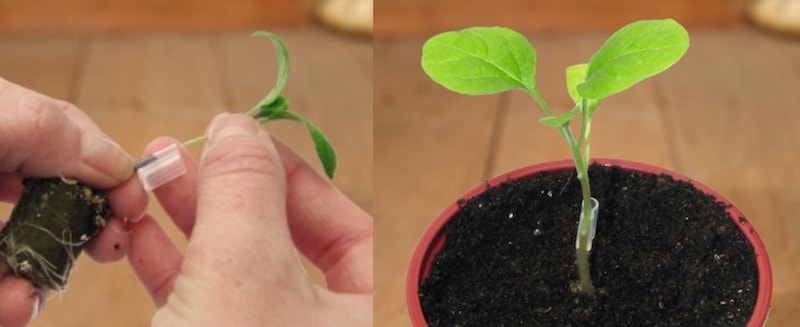
Image: Suttons
Grafted plants are created by hand from specially selected varieties. Here’s how it’s done:
- Two different varieties are grown simultaneously; one that has been chosen for its tasty fruits and another for its super-strong rootstock.
- The tops of both varieties are carefully and skilfully removed by hand using a small blade to slice at an angle across each stem.
- The bottom of the rootstock plant and the top of the fruiting variety are then grafted together using a special clip which drops off naturally as the plant grows.
- The current grafting process for aubergines is below the first ‘seedling’ leaves (cotyledons). However, we constantly run trials to make sure we’re using the best method.
The benefits of growing grafted aubergine plants
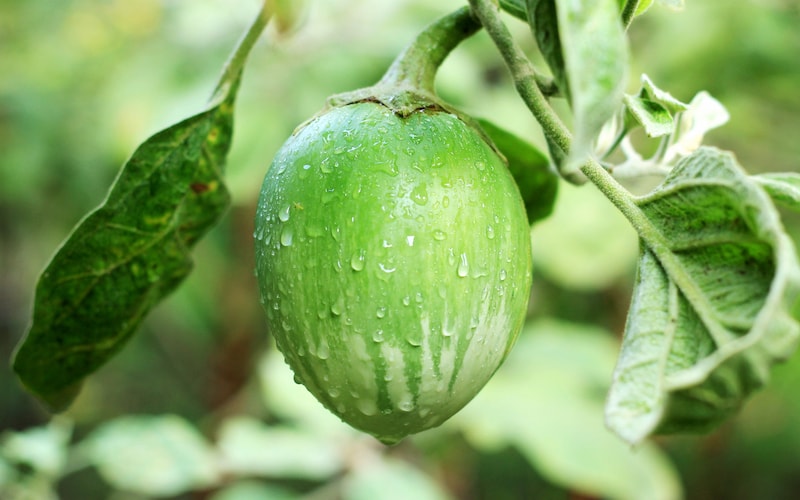
Image: Aubergine Grafted Plants F1 ‘Emerald Isle’ from Suttons
Grafting a vigorous rootstock to a tasty fruiting top means that the new super-strong roots can grow deeper into the soil, soaking up all the nutrients needed. You’ll also benefit from:
- Earlier fruiting than regular plants
- Fruiting for longer than regular plants
- Great value – up to 70% more aubergines per plant and larger fruits
- Greater resistance to soil-borne pests and diseases
- If grown in a greenhouse, they require less heat – saving energy and money
- Better for outdoor growing – if located in a warm, sunny, sheltered location
How to look after grafted aubergine plants
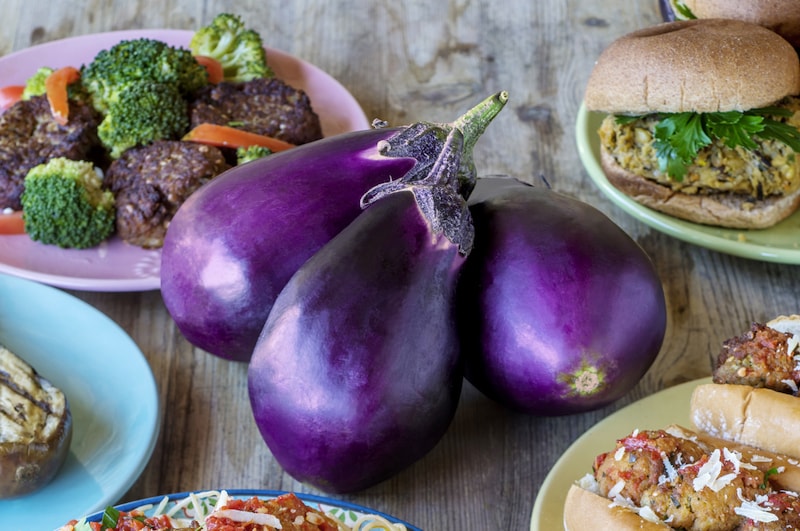
Image: Aubergine Grafted ‘Meatball’ from Suttons
All Suttons grafted plants are grown in our own UK nursery and undergo rigorous inspections by our vegetable experts to ensure the highest quality. When they arrive, remove from the packaging and give your plants time to adjust to their new environment:
- Check the compost is moist and, if required, leave the plant to soak in approx. 5mm (¼”) water for 5-10 minutes or until the top of the compost is damp.
- Stand the plant in a warm, light, airy place such as a windowsill or conservatory and allow it to grow, ensuring that the compost is kept moist.
- As your plant grows it will need transferring into a larger pot to ensure the roots have plenty of room.
- When potting on, ensure that the graft point (where there is a ‘bump’ on the stem) is above the compost/soil. Otherwise the top variety will root itself, spoiling the advantage of growing on a super-strong rootstock.
- Once your plant reaches around 40cm (16″) in height, you can transfer it to its final growing place. A greenhouse is recommended, however a warm, sunny, sheltered location on your patio will also produce a good crop. Only move your plant outside after all danger of frost has passed.
How to train and prune your aubergine plants

Image: Aubergine Grafted Plant F1 ‘Scorpio’ from Suttons/©Branded Garden Products
As your plant develops, the leaves act as ‘solar panels’, soaking up the daylight and creating lots of sugary loveliness and healthy minerals. Each leaf needs plenty of room to bask in the sun and should be supported off the ground.
If a leaf is in shade it will produce less plant sugars and stay slightly damp, making it more susceptible to disease and limiting the plant to smaller and fewer fruits. As your plant begins to crop, remove some of the lower leaves to allow more light to reach the ripening fruits. Simply remove any low-hanging or overcrowded leaves with sharp secateurs.
As soon as your aubergine plant starts to flower you’ll need to support it. Push four stout canes into the soil around the plant. Tie string around the top and middle of the canes to create a secure structure in which the plant can grow.
Feeding and watering grafted plants
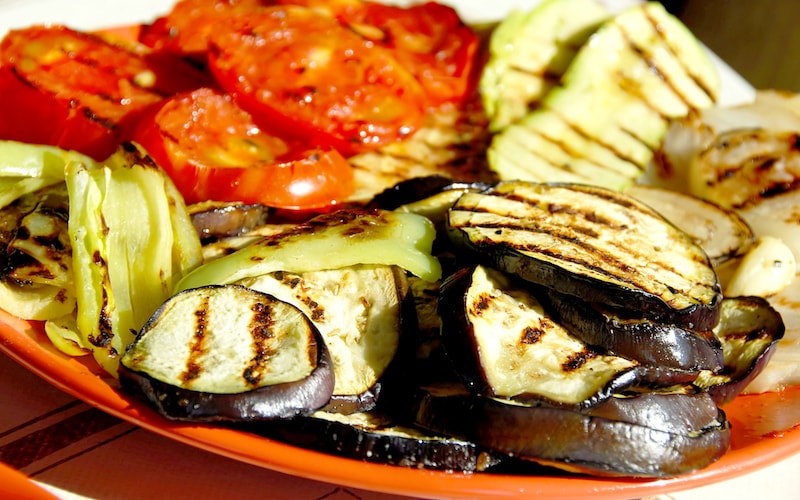
Image: Aubergine Seeds ‘Black Beauty’ from Suttons
By their nature, Suttons grafted plants are more vigorous than standard varieties and require more feeding. We recommend that you feed your grafted plants with a fertiliser that contains high potash levels. You may have to feed your plants twice a week when they start fruiting.
Water is also essential to the success of your plants. Fill a 9 litre (2 gallon) watering can for each plant once the sun has gone down each day (if the compost or soil is dry). This will ensure you have large juicy fruits that taste delicious from early summer through until autumn!
If your aubergine is being correctly fed and watered but fails to produce many fruits, make sure to ventilate your greenhouse or conservatory to help it to self-pollinate. A little disturbance in the air is often enough to achieve this. If it’s outside, make sure it’s in a sunny but sheltered spot where the insects can help pollination.
How and when to harvest aubergines
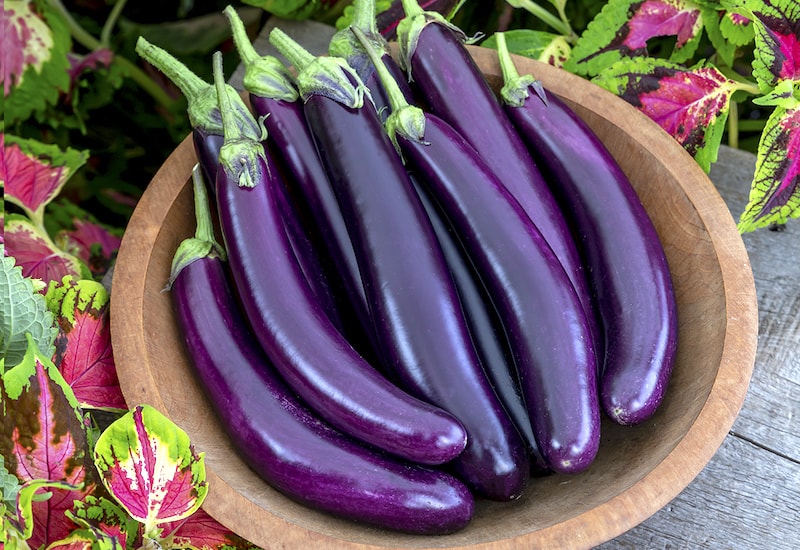
Image: Aubergine plant F1 ‘Violet Knight’ (not grafted) from Suttons
Harvest your aubergines when they’re a lovely deep purple colour and the size you would see in the shops. Simply take some secateurs and cut just above the green stem, leaving approx 2.5cm (1″) at the top. For the best flavour, aubergines should be stored at room temperature; however they can also be stored in the refrigerator.
A great source of fibre, potassium and folic acid, the skin of aubergines contains antioxidants that help the body to fight illness. Whether you choose to barbecue, grill, roast or bake them whole, they’re healthy and versatile vegetables that make a delicious addition to your kitchen garden.
We hope we’ve persuaded you to give grafted aubergines a try. You’ll find an even wider selection of vegetable plants at Suttons, all delivered directly to your doorstep.
Lead image: Shutterstock
Last Updated on January 9, 2025 by Suttons Horticultural Team

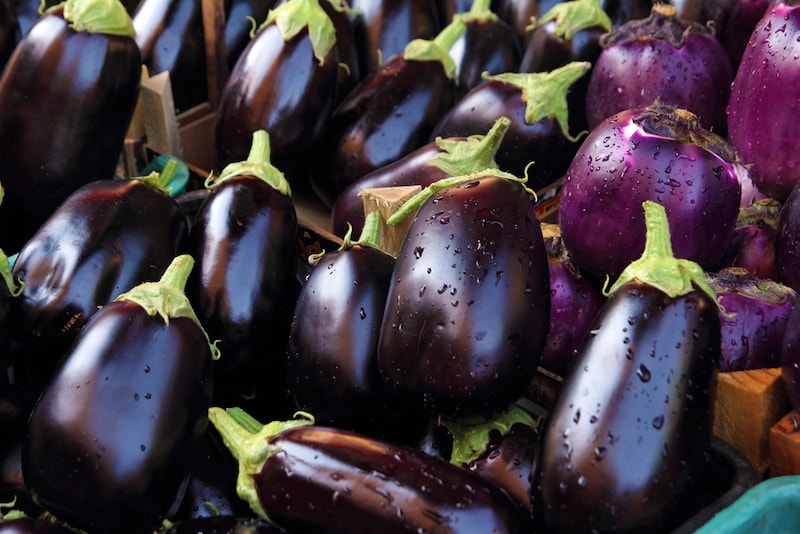

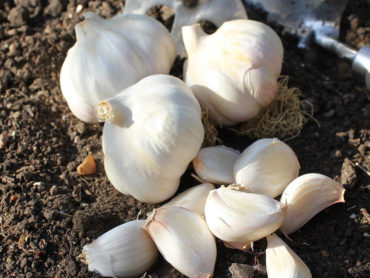
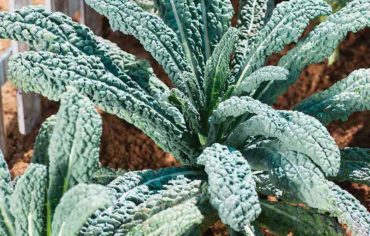
Hi Suttons Team,
There are 2 questions on whether 0lants cropped in one season can be kept for the following season which were not responded to. Any chance you could advise on that please.
I’ve had a successful grafted aubergine plant this year producing lots. However, will it continue next year? And what maintenance is needed?
Hi Claire, the grafted aubergine plant would benefit from a fertiliser high in potash twice a week. Also, they normally self pollinate easily but some air movement helps, ventilate in a glasshouse as well or it will grow happily outside in the warmer months. Make sure it is in a sunny spot where the insects and wind will help pollinate. We hope this is helpful to you and good luck!
Best regards,
The Suttons Team
I bought a grafted plant which arrived in April. I followed all the advice but no aubergines have appeared . What is likely to be wrong please?
I bought 2 grafted plants from a garden center and had about 9lbs from each plant. Can you keep plants for next year?